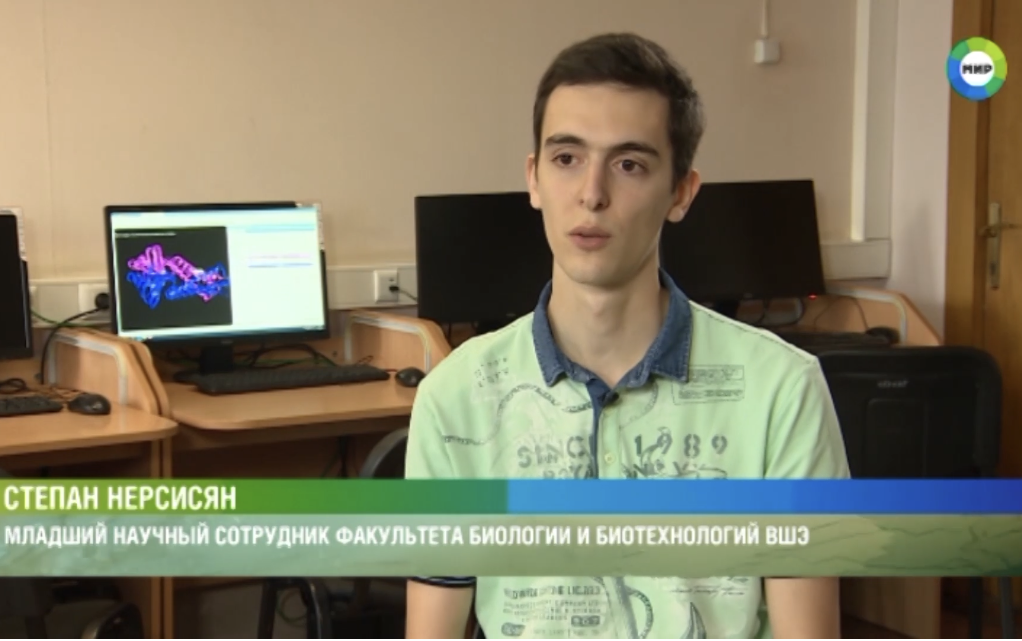Members of the International Laboratory of Microphysiological Systems and students of the Faculty of Biology and Biotechnology gave an interview to the correspondent of ÔÇťMIRÔÇŁ TV company on the results of their study of molecules capable to suppress the replication of coronaviruses
Faculty of Biology and Biotechnology researchers in their interview to the correspondent of ┬źMIR┬╗ TV company talked about their study on interactions between microRNA molecules and human coronaviruses.

Research which was published in PeerJ journal was conducted by Junior Researcher at the International Laboratory of Microphysiological Systems Stepan Nersisyan, Dean of the Faculty of Biology and Biotechnology Alexander Tonevitsky and four second-year students of Cell and Molecular Biotechnology Bachelor's program - Narek Yengibaryan, Alexandra Gorbonos, Ksenia Kirdey and Alexey Makhonin.
After the virus enters a healthy cell, it starts active interacting with intracellular biomolecules, including microRNAs. MicroRNAs are capable to suppress viral replication gradually stopping its spread. After the analysis of the virus interaction with microRNA in the lungs of mice infected with SARS-CoV, scientists determined that the expression of microRNA increases 8-fold upon contact with the virus, besides, has the potential to suppress human coronaviruses. This scenario is beneficial to the pathogen as it helps to avoid a rapid immune response in the cell. Some viruses also accumulate binding sites for host microRNAs. Viruses with the highest number of binding sites survive and reproduce better, which leads to their evolutionary predominance. The research question was to identify the reason why the virus, during the mutation process, did not eliminate the binding sites for this molecule in the RNA, which aims to destroy it during the immune response.
┬źOn the contrary, we see that the virus accumulates these cells in its genome during the evolution process. Our research shows that such sites are present in all human coronaviruses and do not undergo significant mutations. We assume that in this way the virus uses this microRNA to slow down its replication in the early stages of infection to delay an active immune response┬╗, - commented Stepan Nersisyan.
On the next step of the research, scientists plan to conduct experiments to test their hypotheses and to determine whether artificial introduction or removal of microRNAs can stop the virus replication. Researchers suggest that the microRNAs theyÔÇÖve discovered could be used to develop new drugs for coronavirus infections treatment.┬á
 
